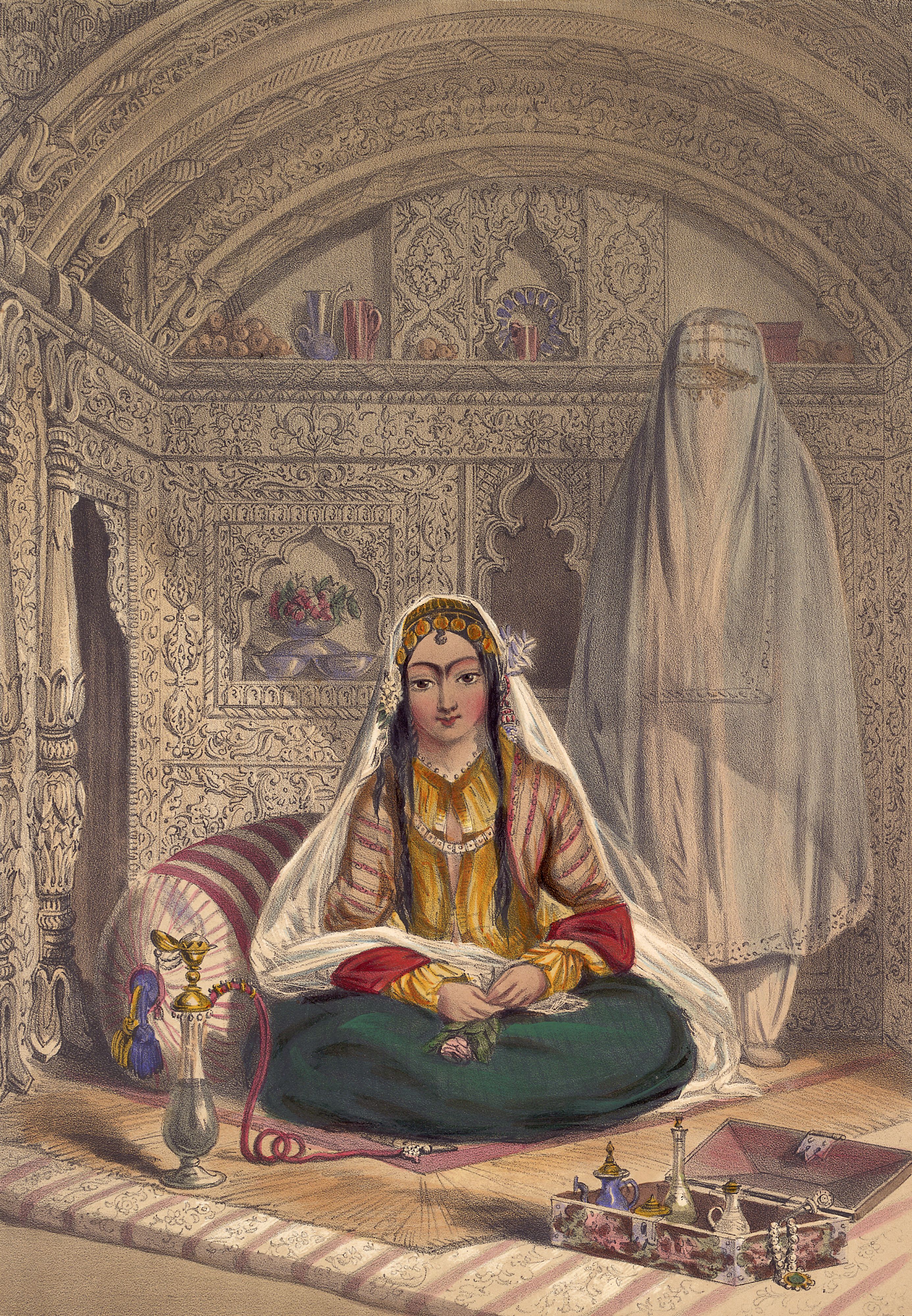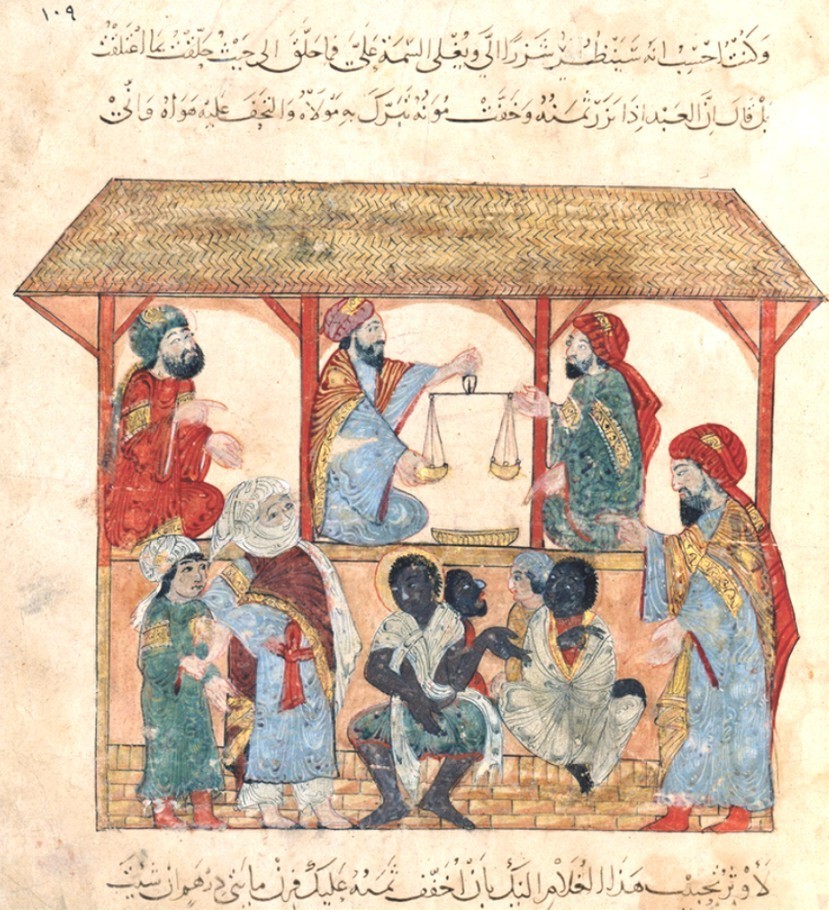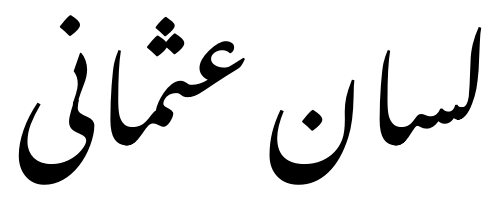|
Harem
A harem is a domestic space that is reserved for the women of the house in a Muslim family. A harem may house a man's wife or wives, their pre-pubescent male children, unmarried daughters, female domestic Domestic worker, servants, and other unmarried female relatives. In the past, during the history of slavery in the Muslim world, era of slavery in the Muslim world, harems also housed enslaved Concubinage in Islam, concubines. In former times, some harems were guarded by eunuchs who were allowed inside. The structure of the harem and the extent of monogamy or polygyny have varied depending on the family's personalities, socio-economic status, and local customs. Similar institutions have been common in other Mediterranean Basin, Mediterranean and Middle Eastern civilizations, especially among royal and upper-class families, and the term is sometimes used in other contexts. In traditional Persian residential architecture, the women's quarters were known as (), and in the Indian s ... [...More Info...] [...Related Items...] OR: [Wikipedia] [Google] [Baidu] |
History Of Slavery In The Muslim World
The history of slavery in the Muslim world was throughout the history of Islam with slaves serving in various social and economic roles, from powerful emirs to harshly treated manual laborers. Slaves were widely forced to labour in irrigation, mining, and animal husbandry, but most commonly as soldiers, guards, domestic workers, and concubines. The use of slaves for hard physical labor early on in Muslim history led to several destructive slave revolts, the most notable being the Zanj Rebellion of 869–883. Many rulers also used slaves in the military and administration to such an extent that slaves could seize power, as did the Mamluks. Most slaves were imported from outside the Muslim world. Slavery in Islamic law does have a religious and not racial foundation in principle, although this was not always the case in practise. The Arab slave trade was most active in West Asia, North Africa (Trans-Saharan slave trade), and Southeast Africa ( Red Sea slave trade and India ... [...More Info...] [...Related Items...] OR: [Wikipedia] [Google] [Baidu] |
Eunuchs
A eunuch ( , ) is a male who has been castration, castrated. Throughout history, castration often served a specific social function. The earliest records for intentional castration to produce eunuchs are from the Sumerian city of Lagash in the 2nd millennium BCE. Over the millennia since, they have performed a wide variety of functions in many different cultures: courtiers or equivalent Domestic worker, domestics, for espionage or clandestine operations, ''castrato'' singers, Concubinage, concubines or sexual partners, religious specialists, soldiers, royal guards, government officials, and guardians of women or harem servants. Eunuchs would usually be servants or Slavery, slaves who had been castrated to make them less threatening servants of a royal court where physical access to the ruler could wield great influence. Seemingly lowly domestic functions—such as making the ruler's bed, bathing him, cutting his hair, carrying him in his litter (vehicle), litter, or even rel ... [...More Info...] [...Related Items...] OR: [Wikipedia] [Google] [Baidu] |
Haremlik
In pre- Atatürk Turkey, a haremlik was the private portion of upper-class Ottoman homes, as opposed to the '' selamlik'', the public area or reception rooms, used only by men in traditional Islamic society. This contrasts with the common usage of harem as an English loan-word, which implies a female-only enclave or seraglio. Although the women of the household were traditionally secluded in the haremlik, both men and women of the immediate family lived and socialized there. Popular culture Ann Bridge's ''Enchanter's Nightshade'' depicts Ottoman life in the period of Atatürk's rise to power, and makes clear the distinction in social usage in that period between the ''haremlik'' and ''selamlik''. See also * Gynaeceum In Ancient Greece, the ''gynaeceum'' (, ''gynaikeion'', from Ancient Greek , ''gynaikeia'': "part of the house reserved for the women"; literally "of or belonging to women, feminine") or the ''gynaeconitis'' (, ''gynaikōnitis'': "women's apartm ..., women’s ... [...More Info...] [...Related Items...] OR: [Wikipedia] [Google] [Baidu] |
Zenana
Zenana (, "of the women" or "pertaining to women"; ; ; ) is the part of a house belonging to a Muslim family in the Indian subcontinent, which is reserved for the women of the household. The zenana was a product of Indo-Islamic culture and was commonly found in aristocratic Muslim families. Due to prolonged interactions between Hindus and Muslims, upper-class Hindu households, inclined to imitate elite cultural trends, also embraced these designated spaces. The zenana were the inner rooms of a house where the women of the family lived and where men and strangers were not allowed to enter. The outer apartments for guests and men are called the ''mardana''. Conceptually in those that practise purdah, it is the Indian subcontinent's equivalent of the harem. Christian missionaries were able to gain access to these Indian girls and women through the zenana missions; female missionaries who had been trained as doctors and nurses were able to provide them with health care and also eva ... [...More Info...] [...Related Items...] OR: [Wikipedia] [Google] [Baidu] |
Sultanate Of Women
The Sultanate of Women () was a period when some consorts, mothers, sisters and grandmother of the sultans of the Ottoman Empire exerted extraordinary political influence. This phenomenon took place from roughly 1534 to 1715, beginning in the reign of Suleiman the Magnificent with the rise of Hürrem Sultan and ending with the death of Gülnuş Sultan. These women were either the consorts – either wives or concubines – of the Sultan, referred to as haseki sultans, or the mothers of the Sultan, known as valide sultans. All of them were of slave origin, as was expected during the sultanate, since the traditional idea of marriage was considered inappropriate for the sultan, who was not expected to have any personal allegiances beyond his governmental role, but at least four of them managed to become the legal wedded wife of the Sultan: Hürrem Sultan with Suleiman, Nurbanu Sultan with Selim II Safiye Sultan with Murad III and Kösem Sultan with Ahmed I. During thi ... [...More Info...] [...Related Items...] OR: [Wikipedia] [Google] [Baidu] |
Concubinage In Islam
In classical Islamic law, a concubine was an unmarried slave-woman with whom her master engaged in sexual relations. Concubinage was widely accepted by Muslim scholars until the abolition of slavery in the 20th-century. Most modern Muslims, both scholars and laypersons, believe that Islam no longer permits concubinage and that sexual relations are religiously permissible only within marriage. Concubinage was a custom practiced in both pre-Islamic Arabia and the wider Near East and Mediterranean. The Quran allowed this custom by requiring a man not to have sexual relations with anyone except for his wife or concubine . Muhammad had a concubine Maria the Copt who had been given to him as a gift by al-Muqawqis with whom he had a son. Some sources say he later freed and married her, while others dispute this. Classical Islamic jurists did not place any limits on how many concubines a man could have. Prostitution of concubines was prohibited. A concubine who gave birth to a child ac ... [...More Info...] [...Related Items...] OR: [Wikipedia] [Google] [Baidu] |
Monogamy
Monogamy ( ) is a social relation, relationship of Dyad (sociology), two individuals in which they form a mutual and exclusive intimate Significant other, partnership. Having only one partner at any one time, whether for life or #Serial monogamy, serial monogamy, contrasts with various forms of non-monogamy (e.g., polygamy or polyamory). The term monogamy, derived from Greek language, Greek for “one marriage,” has multiple context-dependent meanings—genetic, sexual, social, and marital—each varying in interpretation across cultures and disciplines, making its definition complex and often debated. The term is typically used to describe the behavioral ecology and sexual selection of animal mating systems, referring to the state of having only one Mating, mate at any one given time. In a human cultural context, monogamy typically refers to the custom of two individuals, regardless of orientation, committing to a sexually exclusive relationship. Monogamy in humans varies wi ... [...More Info...] [...Related Items...] OR: [Wikipedia] [Google] [Baidu] |
Polygyny
Polygyny () is a form of polygamy entailing the marriage of a man to several women. The term polygyny is from Neoclassical Greek πολυγυνία (); . Incidence Polygyny is more widespread in Africa than in any other continent. Some scholars theorize that the History of slavery, slave trade's impact on the male-to-female sex ratio was a key factor in the emergence and fortification of polygynous practices in regions of Africa. Polygyny is most common in a region known as the "polygamy belt" in West Africa and Central Africa, with the countries estimated to have the highest polygamy prevalence in the world being Burkina Faso, Mali, Gambia, Niger and Nigeria. In the region of sub-Saharan Africa, polygyny is common and deeply rooted in the culture, with 11 percent of the population of sub-Saharan Africa living in such marriages (25 percent of the Muslim population and 3 percent of the Christian population, as of 2019). Polygyny is especially widespread in West Africa, with the ... [...More Info...] [...Related Items...] OR: [Wikipedia] [Google] [Baidu] |
Haram
''Haram'' (; ) is an Arabic term meaning 'taboo'. This may refer to either something sacred to which access is not allowed to the people who are not in a state of purity or who are not initiated into the sacred knowledge; or, in direct contrast, to an evil and thus " sinful action that is forbidden to be done". The term also denotes something "set aside", thus being the Arabic equivalent of the Hebrew concept () and the concept of (cf. sacred) in Roman law and religion. In Islamic jurisprudence, ''haram'' is used to refer to any act that is forbidden by Allah and is one of the five Islamic commandments ( ) that define the morality of human action. Acts that are haram are typically prohibited in the religious texts of the Quran and the category of haram is the highest status of prohibition. Something that is considered haram remains prohibited no matter how good the intention is or how honorable the purpose is. Sins, good, and meritorious acts are placed on the (weighin ... [...More Info...] [...Related Items...] OR: [Wikipedia] [Google] [Baidu] |
Ḥ-R-M
''ح, Ḥ-ر, R-م, M'' (Modern Hebrew, Modern ; ) is the Semitic root, triconsonantal root of many Semitic languages, Semitic words, and many of those words are used as names. The basic meaning expressed by the root translates as "forbidden". Arabic Names *''Masjid al-Haram'' (); "The Sacred Mosque" – the mosque surrounding the Kaaba in Mecca *''Al-Bayṫ al-Ḥarām'' (, "The Sacred House"); the Kaaba *''Muharram, Muḥarram'' (, "The Sanctified [Month]"); the first month of the Islamic calendar *''Al-Ḥaram ash-Sharîf'' (, "The Noble Sanctuary"); the Temple Mount in Jerusalem Concepts *''Mahram, Maḥram'' (, "forbidden", "unmarriageable (kinsman)", also "no need to cover" (see also ''types of hijab''), or an unforbidden person within the family) *''Ihram, Iḥrâm'' (); Hajj cloth, and the state of ritual consecration *''Harem, Ḥarīm'' (, "forbidden precinct"); women's area in a house, forbidden for non-''Mahram'' men *''Haram, Ḥarām'' (); ritually impure, or a forb ... [...More Info...] [...Related Items...] OR: [Wikipedia] [Google] [Baidu] |
Ottoman Turkish Language
Ottoman Turkish (, ; ) was the standardized register (sociolinguistics), register of the Turkish language in the Ottoman Empire (14th to 20th centuries CE). It borrowed extensively, in all aspects, from Arabic and Persian language, Persian. It was written in the Ottoman Turkish alphabet. Ottoman Turkish was largely unintelligible to the less-educated lower-class and to rural Turks, who continued to use ("raw/vulgar Turkish"; compare Vulgar Latin and Demotic Greek), which used far fewer foreign loanwords and is the basis of the modern standard. The Tanzimat, Tanzimât era (1839–1876) saw the application of the term "Ottoman" when referring to the language ( or ); Modern Turkish uses the same terms when referring to the language of that era ( and ). More generically, the Turkish language was called or "Turkish". History Historically, Ottoman Turkish was transformed in three eras: * (Old Ottoman Turkish): the version of Ottoman Turkish used until the 16th century. It wa ... [...More Info...] [...Related Items...] OR: [Wikipedia] [Google] [Baidu] |
Mecca
Mecca, officially Makkah al-Mukarramah, is the capital of Mecca Province in the Hejaz region of western Saudi Arabia; it is the Holiest sites in Islam, holiest city in Islam. It is inland from Jeddah on the Red Sea, in a narrow valley above sea level. Its metropolitan population in 2022 was 2.4million, making it the List of cities in Saudi Arabia by population, third-most populated city in Saudi Arabia after Riyadh and Jeddah. Around 44.5% of the population are Saudis, Saudi citizens and around 55.5% are Muslim world, Muslim foreigners from other countries. Pilgrims more than triple the population number every year during the Pilgrimage#Islam, pilgrimage, observed in the twelfth Islamic calendar, Hijri month of . With over 10.8 million international visitors in 2023, Mecca was one of the ten List of cities by international visitors, most visited cities in the world. Mecca is generally considered "the fountainhead and cradle of Islam". Mecca is revered in Islam as the birthp ... [...More Info...] [...Related Items...] OR: [Wikipedia] [Google] [Baidu] |






